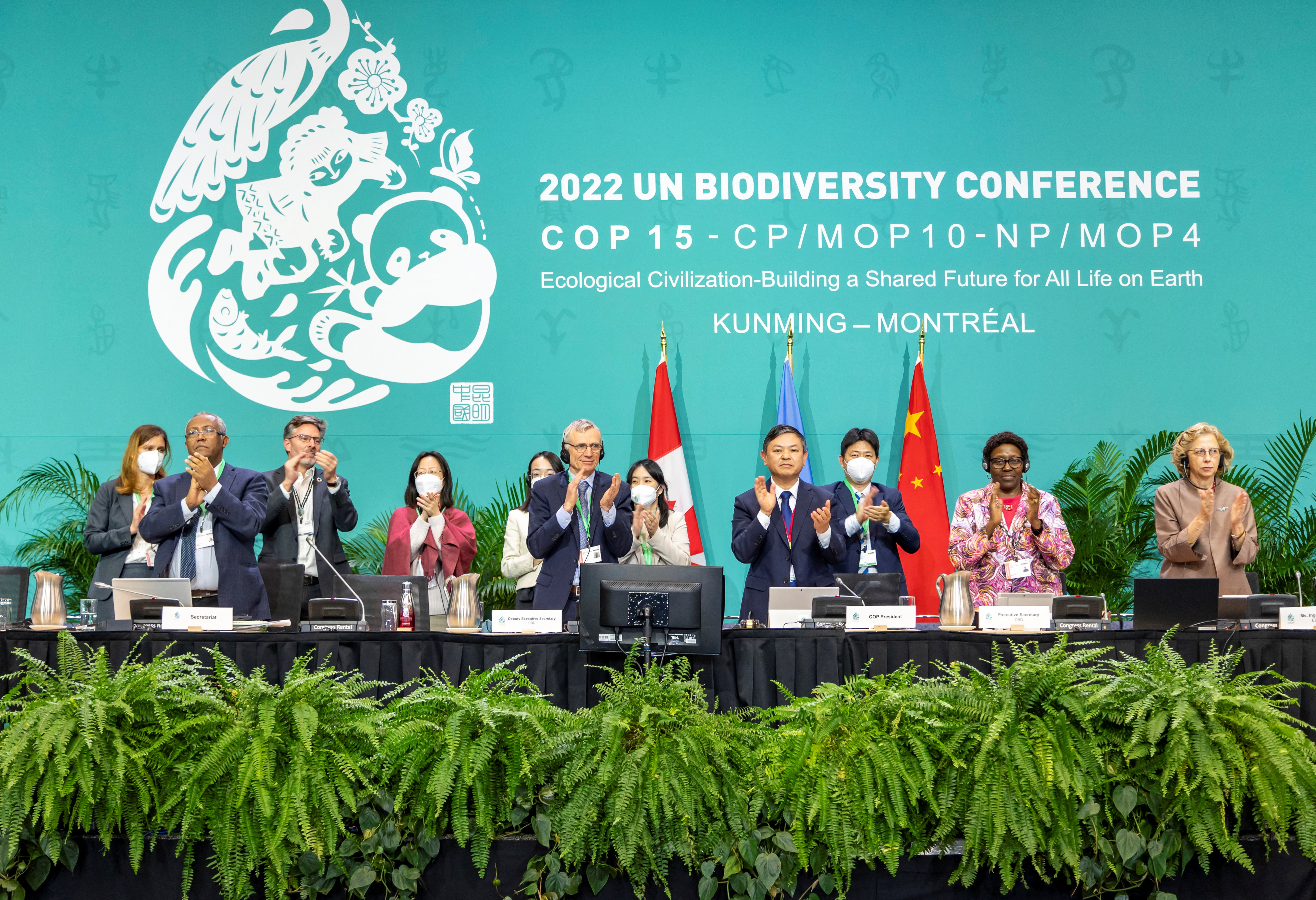COP15 Nature Conservation Deal
2022.12.20 11:47
COP15 Nature Conservation Deal
Budrigannews.com – A historic global agreement to protect nature and allocate billions of dollars to conservation was approved on Monday at a United Nations summit, but objections from important African nations, which are home to vast tracts of tropical rainforest, prevented its final passage.
The Kunming-Montreal Global Biodiversity Framework is the result of four years of work toward the creation of an agreement to direct global conservation efforts through 2030. It reflects the joint leadership of China and Canada.
The nations going to the U.N.- upheld COP15 biodiversity gathering had been arranging a text proposed on Sunday and talks tending to the better marks of the arrangement delayed until Monday morning.
The most ambitious goal of the deal, which is known as “30-by-30,” is to protect 30 percent of the world’s land and seas by the end of the decade. Delegates were able to reach a consensus on this goal.
After the deal was approved, EU Environment Commissioner Virginijus Sinkevicius told reporters, “We have huge achievements in this text now.” Finding the landing area and getting everyone on board took a lot of work.
“A good deal always leaves everyone somewhat unhappy,” said another negotiator, who thought the agreement was balanced.
“A major win for our planet and for all of humanity, charting a new course away from the relentless destruction of habitats and species,” Canada’s Environment and Climate Change Minister Steven Guilbeault said.
Additionally, the agreement requires nations to allocate $200 billion annually for public and private biodiversity initiatives.
Starting in 2025, developed nations will contribute $25 billion annually, rising to $30 billion annually by 2030.
The 2010 Aichi Biodiversity Targets, which were intended to direct conservation up until 2020, have been superseded by the agreement, which contains a total of 23 goals. None of those objectives were met, and no nation met all 20 Aichi objectives.
Marco Lambertini, Director General of the World Wildlife Fund International, stated, “Governments have chosen the right side of history in Montreal.”
Not at all like Aichi, this arrangement contains more quantifiable targets —, for example, lessening unsafe appropriations given to industry by no less than $500 billion every year — that ought to make it simpler to track and report progress.
However, Lambertini stated that the agreement “can be undermined by slow implementation and failure to mobilize the promised resources.” Additionally, it lacks a mandatory ratcheting mechanism that will compel governments to take additional action when goals are not met.
A sixth mass extinction event, according to scientists, could see more than 1 million species, from plants to insects, disappear by the end of the century. Since 1970, the world’s wildlife population has significantly decreased, and as much as 40% of the planet’s land has been degraded.

In the deal, investment firms recommended that businesses examine and report how biodiversity issues affect and affect their operations.
The parties agreed that financial institutions and large corporations would be required to disclose information about their operations, supply chains, and portfolios; however, the term “mandatory” was removed from earlier drafts.
Federated Hermes’ head of impact and sustainable investing, Ingrid Kukuljan, stated, “We think this is something that is going to push the financial sector to step up.”
She stated, “We actually need implementation this time around… we are facing an unprecedented rate of decline.”
At the end, ferocious negotiations resulted from disagreements regarding how to finance conservation efforts in developing nations.
On Monday, while China held the presidency of COP15, Minister of Ecology and Environment Huang Runqiu made it appear as though he did not care about the objections from the Democratic Republic of the Congo’s delegation. He said that the deal passed minutes after they said they could not support it.
A representative from Congo argued that developed nations ought to establish a distinct fund to support conservation initiatives in developing nations.
The DRC plays a crucial role in the future of the planet’s biodiversity because it is the country with the most tropical rainforest in Africa and the second-largest tropical forest in the world.
Other African delegates expressed outrage when Huang announced that the agreement had been reached shortly after 3:30 a.m. (08:30 GMT).
Through a translator, a Cameroonian representative claimed that the agreement was reached by coercion. A third person from Uganda called it a “coup d’etat.”
In any case, at a second gathering Monday night, the DRC seemed to stroll back its by and large complaint, downsizing them to “reservations” on funding and asset preparation.
DRC Environment Minister Eve Bazaiba stated, “We’d like to have this clearly placed on record.” I would like to reiterate that we are prepared to take part in any negotiation process up until COP16. We sincerely hope that our voice will be heard.
The DRC explanation followed a 30-minute cluster of approximately twelve individuals from designations from Brazil, Indonesia and the DRC – the world’s three most rainforest-rich countries – saw by Reuters.
A negotiator stated that Brazil ultimately assisted in brokering a solution “whereby no questions would be left regarding the legality of the approval of the (deal)” with Indonesia’s support. The agreement’s legality and legitimacy can no longer be questioned.”
More Restrictions for migrants due to COVID in U.S.
Minister Huang thanked the nation for its support and emphasized the DRC’s significant role in global biodiversity governance.








